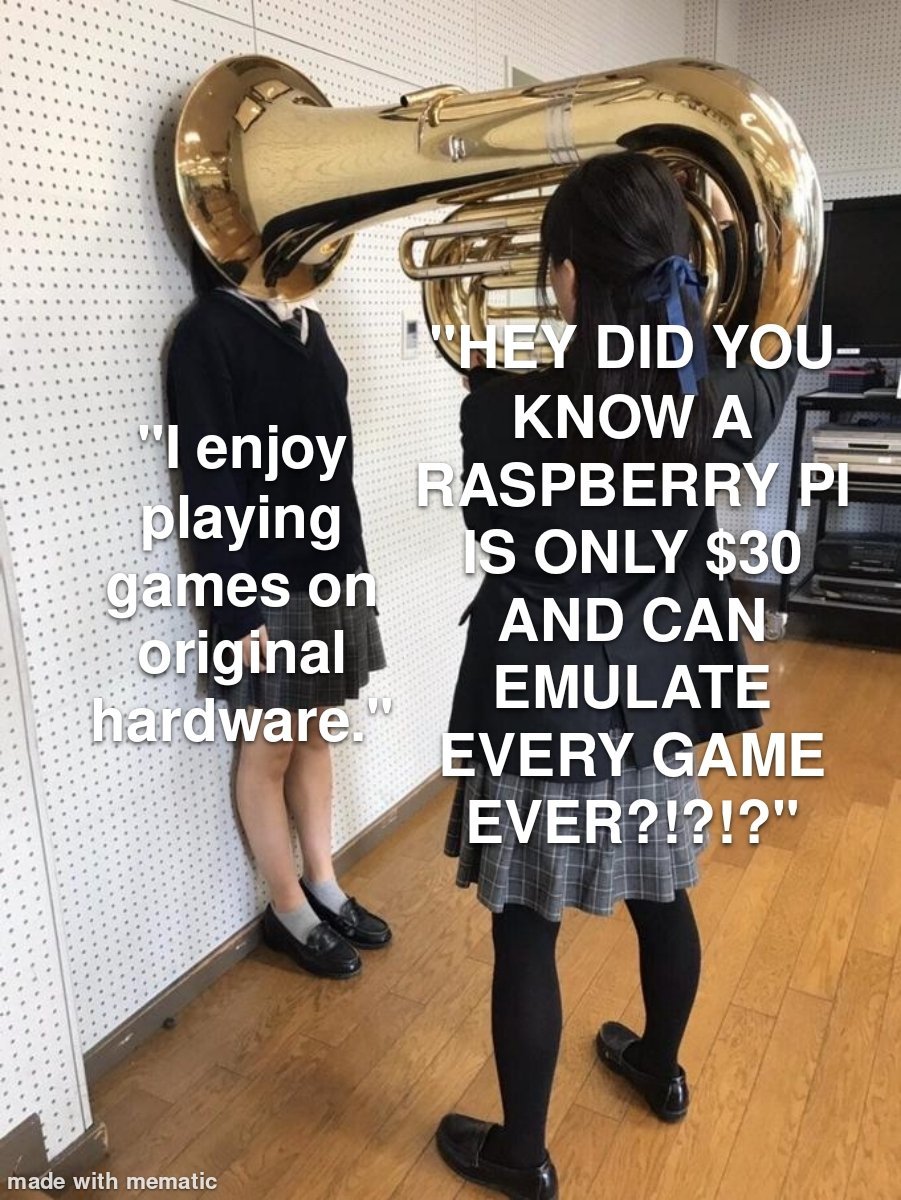this post was submitted on 02 Aug 2024
592 points (94.6% liked)
RetroGaming
19508 readers
314 users here now
Vintage gaming community.
Rules:
- Be kind.
- No spam or soliciting for money.
- No racism or other bigotry allowed.
- Obviously nothing illegal.
If you see these please report them.
founded 1 year ago
MODERATORS
you are viewing a single comment's thread
view the rest of the comments
view the rest of the comments

To get the top quality output I like out of a NES, I have to mod it for RGB/SCART by removing its PPU. Getting it out without damaging it is tricky, because it's soldered to a large ground plane that is very good at soaking away the heat in your soldering iron.
To get the NES to stop the damn blinking light, I have to use a new cartridge slot that grips extremely strong and is a PITA to get the cartridge back out again. Or use the top loader with worse audio. (Ninten-Drawer seems to be better than the Blinking Light Win here, but reviews note it's still pretty tight.)
To get decent loading times out of a Playstation 1, I have to mod it for an SD card (PSIO). This involves shaving away some very thin traces and soldering to them.
To get decent image quality out of an N64, I need a game specific GameShark code, a game patch with an EverDrive, or a mod. That mod doesn't have a DIY version, and must be sent to an approved modder.
To get games to work reliably and with high quality images and good loading times on any of these with emulation, I have to download a thing.
I don't think these are merely a matter of space/time/money. It takes quite a bit of knowledge and skill to achieve the mods, and you might end up with broken consoles in the attempt. I have enough soldering skill to do the PSIO mod. I haven't managed to get a PPU out of a NES without damage, though I think I know some tricks now that could make it work.